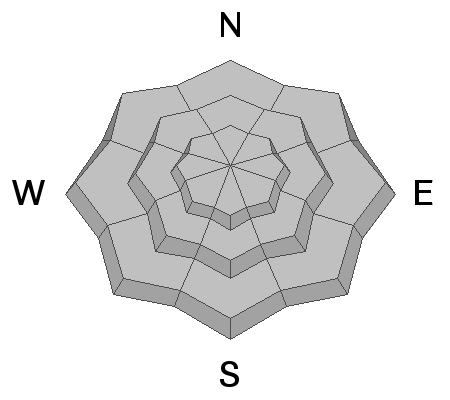I've stopped issuing regularly scheduled forecasts for the season. I will continue to update the snowpack summary through the end of the month as conditions warrant.
Use these real-time weather links to plan your day before you head up to the mountains.
Snowpack: The snowpack is in a transition phase and it's a mixed bag of conditions out there. Corn snow has been developing on SE-S-W aspects, as well as on low angle northerly facing terrain that sees a lot of direct sunshine. More sheltered, and steeper north-facing terrain is a mix of wind hammered, crusted, and heat-affected snow. In deeper areas, the snowpack is consolidating and has gained strength but there are still shallow areas where faceted snow from February can be found. You are most likely to find this weak snow on northerly aspects in areas of rocky, radical, more extreme terrain. It can also be found on shady aspects at lower elevations where it is extremely susceptible to daytime heating.
Corn Snow: Corn is a springtime delicacy that develops after the snowpack goes through several rounds of melting and re-freezing. It can be fickle and overnight re-freezes are key. Corn develops first on southerly aspects in wind-sheltered, mid to lower elevation terrain where the snow gets really cooked. Low angle northerly facing slopes can also make the transition early due to the high angle of the sun. The bigger, steeper, north-facing terrain generally doesn't make the transition to corn snow until sometime in May, or about the time the entire snowpack goes isothermal. Isothermal refers to a snowpack that is wet throughout its depth with all layers being the same temperature. The snowpack eventually becomes one homogenous mass under these conditions.
Getting on and off the snow early is key. Work with the sun by skiing slopes with a more easterly component first, and finishing up in westerly facing slopes by early afternoon. If the snow is becoming wet and sloppy and you are punching through above your boot tops, or are leaving deep ruts in the snow, you are too late.
Numerous loose wet avalanches occurred last week on south through westerly aspects.



